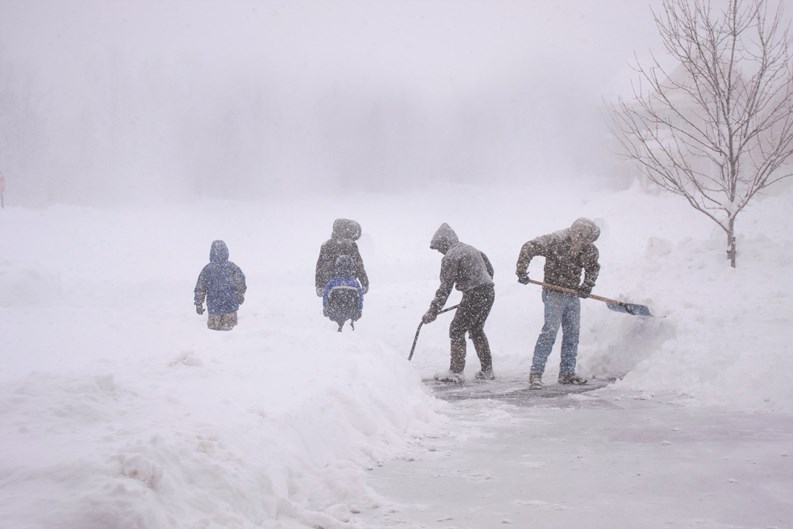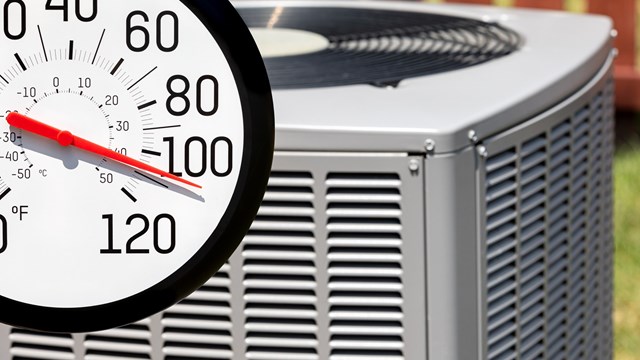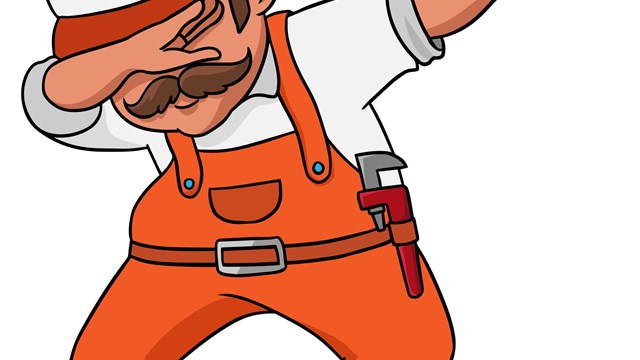The contractors who helped dig out the region’s condo properties last winter agree on one thing—the associations that were ‘rescued’ first were the ones with solid vendor relationships.
And a little reality-check doesn’t hurt either.
Robert Pappalardo, vice president at U.S. Pavement Services in Woburn, Massachusetts, stresses that the best thing associations can do is form an agreement—well ahead of time—with the vendors who can help a community in a winter emergency. “Summer is the time to reach out and create some kind of plan with contractors,” he states, “since, by September, they are starting to sort out their bids and contracts for winter snow and ice clearing.”
Most importantly, he notes, “is including specific items in the plan, spelling out what you need, starting with basic plowing… pushing the snow to wherever it can be stored onsite. Second, outline a plan for de-icing (paved surfaces). And third, consider how snow can be hauled away if need be.”
“Hauling and snow removal services were at a premium last winter,” he continues, “and properties without a vendor under agreement, well ahead of time, were really left hanging.”
He contends that most parking lots in the Northeast have been designed with space enough to store plowed snow, “and you can get away with pushing snow (on property) most winters… but weather patterns really seem to be changing. This was the first time I’ve seen so many properties that just ran out of space (which) required hauling snow away.”
Have a Good Game Plan
Therefore, he adds, “It’s good to have a snow removal game-plan before the first storm hits. Where will the snow be pushed to maximize parking and safe access to the units? Make sure this is outlined now and not after the panic has hit and safety is a concern. It is inevitable that snow may need to be hauled at some point during the winter season, once the capacity to push has been met. If this happens, make sure you have an agreed rate and contractor for snow removal well in advance.”
Another thing that associations should do in advance, says Pappalardo, “is to take the time to sealcoat and crack fill parking lots prior to the winter. This process should be done every other year for maximum returns and will help prevent moisture from getting underneath the parking lot surface which creates long-term damage and future issues. We also recommend sealing any concrete walkways or flat areas. Rock salt or sodium chloride-based ice melt products are very corrosive to concrete and will eat away at it immediately. Sealing the concrete gives an extra layer of protection against this threat. Also, ask your contractor what types of de-icing products they use, if walkways are covered… Do they use metal or plastic shovels, roof rakes…” Associations need to be specific about the details—ahead of time.
Tips from the Pros
Joe Danz is project manager at Winter Hill General Contractor Inc. in North Reading, Massachusetts and owns Boston Exteriors & Remodeling. Last winter, he says, “We got 20 phone calls some days… and were able to do five or six a day. People who got the snow cleared early and had rakes on hand… were in the best shape. We were filling big dump trailers and hauling snow to these ‘snow farms’ which were often on land owned by landscape companies. Among contractors especially, it was a big community effort.”
Through trial and error, he continues, “we came up with a system to open up ice dams and allow melting water to flow off the roof. First, we cut channels, about six inches down, into dams that might be one to two feet deep, one channel every two feet or so along the roof edge. Then we filled pantyhose with calcium chloride and placed them into those channels, to melt the ice down to the roof surface.” This kept the ice dams from trapping water on the roof above and seeping under the shingles and into the interior. “If you just make cuts into the ice dams without using snow-melt it would make the problem worse,” he adds, as ice dams constantly re-freeze.
On modern, pitched roofs, he explains, the soffit and ridge vents were designed to send outside cold air under the roof deck and above the insulation to inhibit snow melt. “But even on (these) newer roofs, water got into the soffits and froze up, and the ridge vents were covered in snow, so air flow was blocked” and the interior warmth caused snow melt on the roof which flowed down to the cold, bottom edge of the roof where ice dams formed.
Because of this problem, builders and contractors are approaching roof design differently. “They’re starting to use a vent-less system, and insulating between joists where there used to be air channels.” Danz also notes that Massachusetts Building Code, which currently calls for a three-foot wide ice and water barrier (underlying the shingles) “will probably be upped to a six-foot wide installation, which is what our company uses anyway.”
He explains that roof design and materials are evolving in response to these ice and water infiltration issues. “Architectural shingles have mostly replaced the older, thinner, three-tab style which was only good for about 15 years. Architectural shingles are considered ‘lifetime’ which means 30-50 years. They’re layered and staggered, which makes them thicker.”
Then there’s the traditional, slate roof. “In that recent, tough winter,” Danz notes, “people with slate roofs got creamed.” The best solution that we’ve used,” he continues, “is to just remove all the slate, line the deck 100 percent with the water & ice barrier, and re-install the slate.”
Avoid Amateurs on the Roof
David Isenberg, principal in the Isenberg Company of Dedham, Massachusetts, a maintenance and capital improvement firm, contends that “Nobody in the condo world wants to budget for something they think will never happen… no one budgets enough for snow removal. Trustees don’t want to spend money on something intangible. Even when it was forecasted, and I warned them, many of our clients waited to the very last second. Then, there were a lot of people up on roofs, pushing snow off, who had no business being up there. The fact is, most contractors don’t have proper insurance for roof snow removal… including liability and damage to the roof, which is often times not covered under general liability (insurance).”
“Roofing companies are most appropriate for snow removal on roofs,” Isenberg insists, since general contractors don’t have snow removal as extra coverage. Consequently, he also recommends that clients “always maintain relationships. As a property manager, contractor loyalty is a two-way street. We had an association that bid out their landscaping and found another firm that proposed the job at $1,000 less than the one they’d been using for years, and I asked them, ‘Isn’t it worth something that they’ve been good to you?’…A contractor will go out of his way for the clients who give them the most work. In the long run, go with the (contractor) who makes you feel comfortable and makes your (manager’s) life easier.”
Melting vs. Hauling
Finding contractors to clear snow and ice is one challenge; the next step is removing snow when a property is short on space, as in urban neighborhoods. Aside from trucking the snow piles away, some property managers discovered an even more efficient solution last winter—turn it directly into storm water.
Anthony J. Antico, III, known as “Anthony Bo,” president and CEO of Antico Irrigation Systems, also heads an affiliate company called Snow Ghost Melters of Marlboro, Massachusetts. “We acquired these portable snow melt machines two years ago, and last winter they were out for hire… one of the few (such services) available. This rig can go anywhere that can fit a medium-size truck. It’s a trailer with a huge BTU diesel-fired boiler in one end, the rest of the rig is a giant tank… It looks like a big hot tub, with jets shooting 140-degree water. Heavy equipment scoops up the snow and dumps it into the ‘tub’ where it instantly melts.”
When the water level reaches the overflow outlet, after about eight hours, he continues, “We empty it out. Using a big hose—like a fire hose—it’s emptied into a catch basin, storm drain or retention basin. The rig also filters the melted snow and captures any debris over one square inch. While we’re dumping snow in, the steam cloud is visible for a half-mile… hence the name Snow Ghost.” He notes that his company melted snow this year for such diverse clients as an office complex in Boston and a shopping plaza in West Boylston. “The cost for this service is similar to the cost of trucking snow off-site, about $1,500 per hour. We’re using up to 50 gallons of fuel per hour and paying two operators, plus transportation to and from the site.”
Antico explains that “we have a lot of sites where we use chemical (melt) applications,” such as calcium chloride or potassium chloride, which have a very low freezing point and do not leave damaging residue. He also recommends heat tape systems on roof edges, “which we use on our own buildings, but they must be installed properly. They work best with automatic sensors that kick in according to temperature and humidity.”
He says that associations can reach out and buy materials and equipment themselves to “make sure you’re ready (in an emergency) even before contractors can get out there. Have a snow blower on site, snow rakes, shovels… You have to be able to get (a resident) out in an emergency.”
As a contractor, Antico stresses, “I’ll make sure we have the resources and extra equipment available… but as I tell our (association) clients, the most important thing is to build a relationship with their vendors (and) they’ll get first priority.”
Marie Auger is a freelance writer and a frequent contributor to New England Condominium.







Leave a Comment